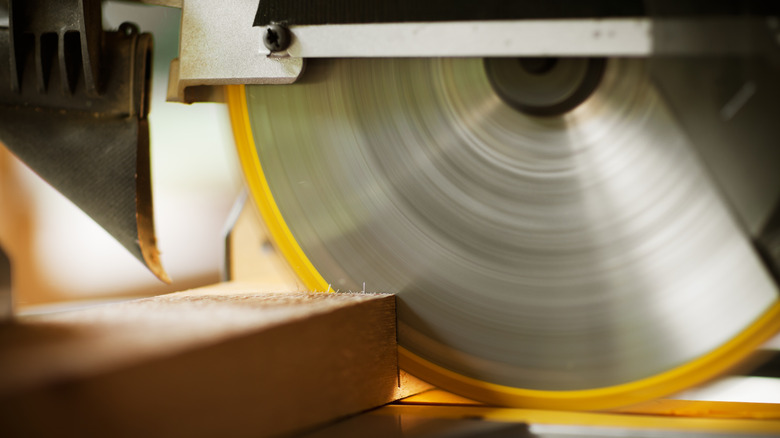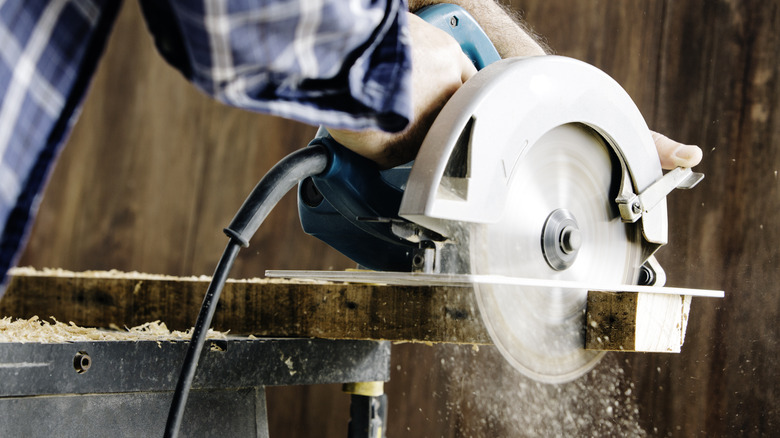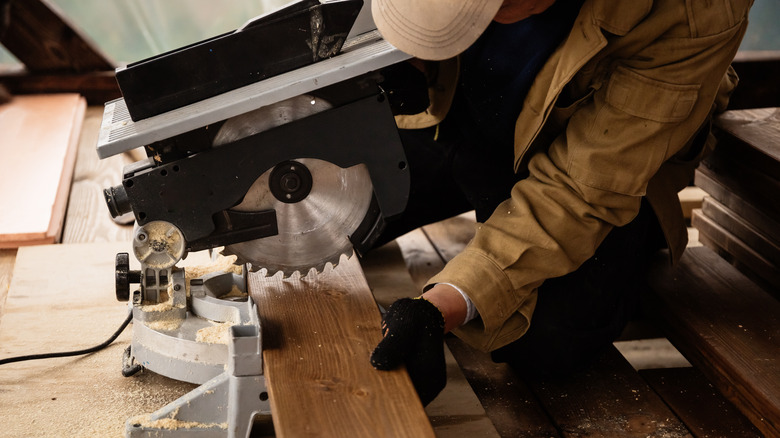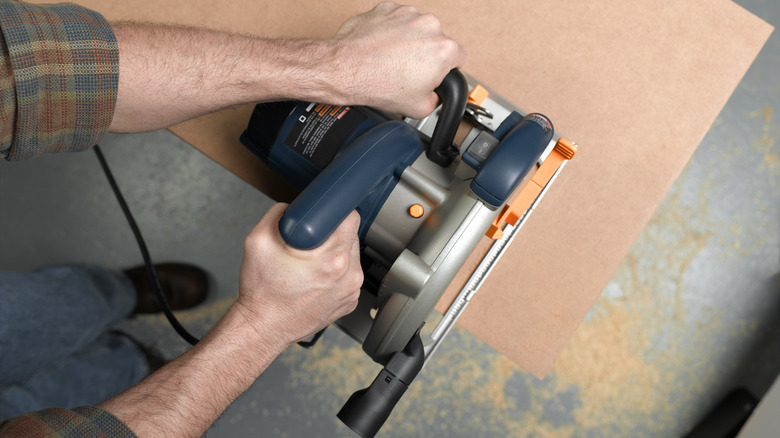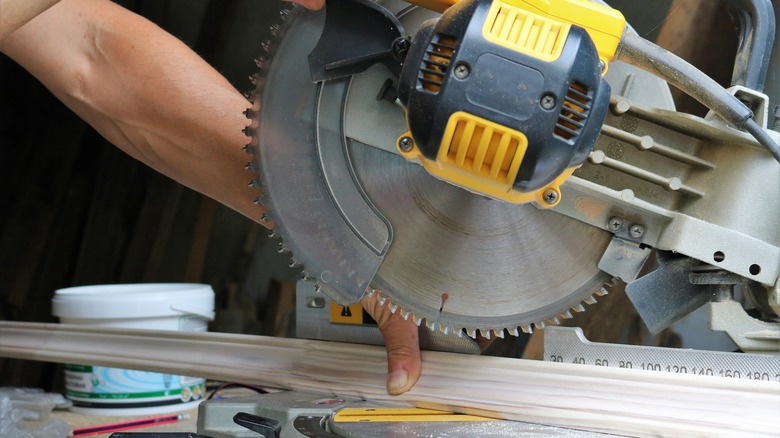Circular Saw Vs. Miter Saw: How To Pick The Right Tool For The Job
While there's a bit of wiggle room, proper DIY demands precise measurements. While nature (and your local lumber yard) provides all the raw materials you could need if you're creating something new from scratch, there's no way you'll be able to do it out of a bunch of raw 2x4s. Luckily, the DIYer's arsenal contains one of the most trustworthy tools in the history of hardware: The saw. With a few quick passes, you can chop any chunk of wood down to a more workable size.
The only mystery in the equation is the precise kind of saw you should be using for your project. A powered saw is obviously better than an old hand saw, but within that framework are two distinct types: Circular saws and miter saws. What exactly is the difference between these two cutting implements, and perhaps more importantly, when would it be wise to use one over the other?
What is a circular saw used for?
A circular saw is a classic staple of workshops big and small; it's a razor-sharp rotating blade mounted to a handheld motor mechanism, usually flanked by a pair of metal guards. All you need to do is place the guards on your chopping target, squeeze the trigger, and push. The rotating blade will slice through wood like a hot knife through butter.
Since a circular saw is a handheld tool, it's fairly easy to transport and can be used on any pre-existing surface. It's a great home improvement standby, as you can bring it to any spot in your home that needs a quick trim, like an oversized door frame or a slightly pointy counter corner.
Circular saws come in a few variants, such as track saws, which include a clamping track for cutting large lengths of materials, and compact saws, which are even smaller than regular circular saws for cutting in cramped confines.
What is a miter saw used for?
If you ever took a shop class in school growing up, you may be familiar with the miter saw. A miter saw is kind of like an inverted table saw — rather than a table with a saw built into it, a miter saw includes a mount with a rotating blade stationed above it. You place the material you want to cut onto the mount, then pull the blade down to cut through it. The mount usually has a divot in it, allowing you to push the blade all the way through your material.
A miter saw's stationary design makes it less of a tool and more of an installation. Rather than taking it around a workshop with you, you instead bring the materials to it. Since you don't have to hold it up yourself, it's fairly easy to use, provided you exercise the same level of caution you would with any cutting device.
Miter saw variants include compound and sliding compound miters, which add varying degrees of adjustability to the mount for more complicated cuts.
When to use a circular saw over a miter saw
Two of the big appeals of a circular saw over a miter saw are portability and cost. Obviously, something meant to be picked up and carried around is going to be both smaller and lighter than something that needs a work table to function. This makes circular saws good for those with smaller workshop situations who may not have room for a full miter saw station. The smaller size and simpler design also make circular saws generally cheaper than miter saws.
A circular saw can be a better option than a miter saw if you're working with larger or heavier materials that you can't easily lift and move yourself. If you can just bring the blade to them, this stops being a problem. Circular saws are especially good for quickly cutting through large sheet materials like plywood, which may not fit cleanly onto a miter saw mount.
When to use a miter saw over a circular saw
If you're looking for precision and consistency in your cuts, miter saws are the way to go. While circular saws are convenient, their reliance on the steadiness of your hands means that, unless you have remarkably good poise, your cuts may end up uneven or curved. Since a miter saw's blade is suspended in place, you're all but guaranteed to get the same kind of cut every time. This is especially useful for small-scale DIY projects like building dioramas or furniture.
Depending on the kind of work you're doing, a miter saw may take care of it faster than a circular saw. Miter saws are stationary and accurate, whereas circular saws require readjusting after every cut. Miter saws are also a bit safer than circular saws in certain ways. As long as you keep your fingers far away from the blade, there are fewer instances where you could be potentially injured, as opposed to the intense kickback that can arise when operating a circular saw. Regardless, it's important to follow standard safety tips when operating a circular saw or miter saw.
